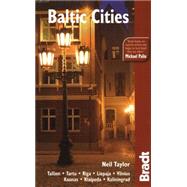
Neil Taylor has previously run a tour company specializing in the Baltics, and has been traveling regularly to the Baltics ever since independence enabled them to open to tourism in 1992. He is author of the Bradt guides to Estonia and Tallinn and divides his time between London and Tallinn.
| General Information | |
| Background Information | |
| Natural History | |
| Practical Information | |
| The Guide | |
| Littoral Province | |
| Southwest Province | |
| West Province | |
| Northwest Province | |
| Centre Province | |
| South Province | |
| East Province | |
| Adamawa Province | |
| North Province | |
| Extreme North Province | |
| Language | |
| Charitable Organisations | |
| Birds Species | |
| Further Information | |
| Index | |
| Table of Contents provided by Publisher. All Rights Reserved. |
The New copy of this book will include any supplemental materials advertised. Please check the title of the book to determine if it should include any access cards, study guides, lab manuals, CDs, etc.
The Used, Rental and eBook copies of this book are not guaranteed to include any supplemental materials. Typically, only the book itself is included. This is true even if the title states it includes any access cards, study guides, lab manuals, CDs, etc.
Excerpted from Baltic Cities by Neil Taylor
All rights reserved by the original copyright owners. Excerpts are provided for display purposes only and may not be reproduced, reprinted or distributed without the written permission of the publisher.